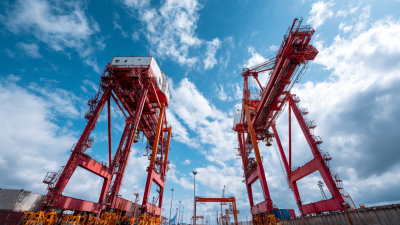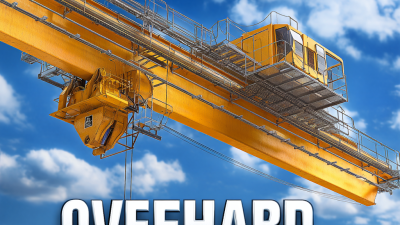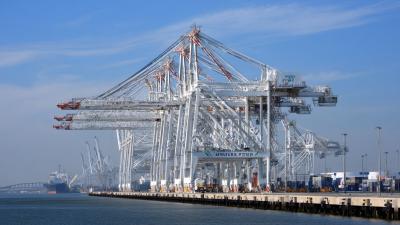Inquiry
Form loading...
-
Phone
-
Wechat

-
Whatsapp

Overhead cranes are pivotal in various industrial sectors, playing a crucial role in material handling and operational efficiency. According to the Bureau of Labor Statistics, incidents involving overhead cranes account for a significant percentage of workplace injuries, underscoring the importance of understanding safe operational practices. A report by the Occupational Safety and Health Administration (OSHA) revealed that improper use of overhead cranes can lead to severe accidents, resulting in both financial losses and potential fatalities.

As industries continue to advance technologically, incorporating automation and advanced monitoring systems can enhance safety protocols and operational efficiency. It is essential for operators and managers to stay informed about best practices and safety measures to mitigate risks associated with overhead crane operations.
This guide aims to provide essential insights and practical tips for ensuring safe and efficient operations of overhead cranes, enhancing workplace safety and productivity.
Overhead cranes play a vital role in various industries, facilitating the movement of heavy materials with precision and efficiency. Understanding the key components that ensure the safety and operational efficiency of these cranes is essential for any workplace. Critical elements such as hoists, bridge beams, end trucks, and control systems work in unison to lift and transport loads safely. According to a report by the Occupational Safety and Health Administration (OSHA), approximately 20% of workplace injuries involve material handling, emphasizing the importance of safe crane operations.
To enhance safety and efficiency, regular maintenance and inspections of these components are imperative. Ensuring that the hoist mechanism is clear of debris and properly lubricated can prevent breakdowns during critical operations. Moreover, utilizing load monitoring systems allows operators to maintain awareness of weight limits and avoid overloading, reducing the risk of accidents.
**Tips:** Always train operators in proper crane usage and emergency procedures. Implement a routine inspection schedule for the crane’s critical parts, and consider using technology such as load sensors to monitor and maintain operational safety. Adhering to these practices can significantly lower risks and improve performance in crane operations.

Overhead cranes are essential in various industries, facilitating the movement of heavy loads with precision and efficiency. However, like any machinery, they require regular maintenance to ensure safe and prolonged operation. According to the Occupational Safety and Health Administration (OSHA), proper maintenance can reduce the risk of accidents and equipment failure, leading to a safer work environment and minimizing downtime.
To extend the lifespan of overhead cranes, operators should implement a proactive maintenance schedule. Regular inspections of critical components—such as hoists, hooks, and controls—are vital. According to a report by the Crane Manufacturers Association of America, well-maintained cranes can last over 20 years, compared to an average lifespan of just 10 years for poorly maintained units.
Tips:

Overhead crane operations pose significant safety hazards that require diligent attention to prevent injuries and accidents. One prevalent risk is being struck by falling loads or equipment, as highlighted by recent incidents where workers were injured due to crane malfunctions. For instance, a mobile crane overturned during a lift, resulting in a worker being struck by a falling boom. This underlines the importance of adhering to established safety protocols and implementing effective controls within the work environment.
To mitigate such risks, both employers and employees should collaborate to ensure comprehensive safety measures are in place. This includes conducting thorough risk assessments and offering ongoing operator training to enhance awareness of potential dangers, such as adverse weather conditions and equipment failures. Utilizing technology, such as IoT-connected cranes, can also contribute to safer operations by allowing operators to control equipment from a distance, reducing their exposure to hazards. By prioritizing safety and staying informed about best practices, crane operations can be conducted more efficiently and with minimal risk of accidents.
This chart illustrates the common safety hazards associated with overhead crane operations and their frequency. Understanding these hazards is vital for implementing safety measures and ensuring efficient operations.
Training operators on overhead crane safety is crucial for preventing accidents and ensuring efficiency in industrial environments. The first step in this process involves providing comprehensive training programs that cover the fundamental principles of crane operation. These programs should include both theoretical knowledge and practical skills, emphasizing the importance of understanding the crane's design, load capacities, and the potential hazards present in their work environment. Operators must be familiarized with signal communication and the specific safety protocols tailored to their facility.
Additionally, hands-on training is essential for reinforcing safety concepts. Operators should practice under the supervision of experienced trainers, allowing them to gain confidence and competence in real-world scenarios. Regular drills and refresher courses should be integrated into the training regimen to ensure that operators remain vigilant and updated on the latest safety protocols. Incorporating assessments to evaluate the operators’ understanding and readiness can further enhance the training process. By fostering a culture of safety through effective training, organizations can mitigate risks associated with overhead crane operations and promote a more secure workplace.
| Aspect | Details | Best Practices | Training Focus |
|---|---|---|---|
| Operator Certification | Required for all overhead crane operators | Regular refresher courses | Understanding certification requirements |
| Safety Inspections | Monthly inspections mandated | Daily pre-operation checks | Training on inspection procedures |
| Load Management | Maximum load limits specified | Use load indicators | Understanding weight distribution |
| Emergency Procedures | Clear protocols established | Regular emergency drills | Training for emergency scenarios |
| Communication | Use of hand signals | Standardized communication methods | Training on effective communication |
Innovative technologies have significantly transformed the landscape of overhead crane operations, enhancing both efficiency and safety in a variety of industrial settings. One of the key advancements is the integration of smart sensors and IoT devices that enable real-time monitoring of crane performance. These sensors can detect weight loads, track operational patterns, and provide predictive maintenance alerts, which help prevent mechanical failures and reduce downtime. Such proactive measures not only optimize performance but also mitigate safety risks associated with overloaded cranes or unexpected malfunctions.
Additionally, advancements in automation have led to the development of autonomous overhead cranes that can operate with minimal human intervention. By utilizing machine learning algorithms, these cranes can adapt to their environment and improve their operational precision. This reduces the likelihood of human error, which is often a significant factor in accidents. With features such as remote control and automated safety protocols, these innovative cranes enhance workplace safety while streamlining material handling processes, ultimately benefiting productivity across various industries.






